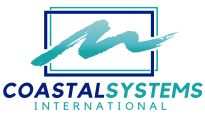Accessibility and Pedestrianization
Waterfronts are for everyone—and making sure they are accessible, welcoming, and walkable is essential to their success. At Coastal Systems, we design waterfront destinations that people can enjoy no matter their age, ability, or mode of arrival. Accessibility and pedestrianization aren’t just checkboxes for us—they’re how we unlock the full potential of the site, ensuring that every visitor can connect with the water and the community around it.
Prioritizing Universal Design
We build accessibility into every layer of our projects from the very start. This means designing seamless transitions between different surfaces, gentle slopes, and wide paths that accommodate wheelchairs, strollers, and mobility aids. Handrails, tactile paving, visual contrast markings, and accessible restrooms are standard features—not afterthoughts.
We go beyond minimum code requirements because we know that truly inclusive design serves all users better. For example, instead of simply providing a single accessible route, we create multiple accessible pathways so that everyone has equal options to explore and enjoy the space. Benches with armrests, shaded rest stops, and clear, readable signage enhance the experience for every visitor.
Designing Walkable Waterfronts
In great waterfront destinations, walking becomes the primary mode of transportation. We prioritize the pedestrian experience with wide promenades, boardwalks, and plazas that encourage strolling, gathering, and people-watching. Pedestrian-focused design increases safety, enhances public health, and strengthens the economic vitality of waterfront areas by boosting foot traffic for local businesses.
Key design features include textured paving for visual and tactile differentiation, shaded corridors, drinking fountains, dog-friendly amenities, and wayfinding signage. We also design vehicle access carefully, using bollards, curbless streetscapes, and pedestrian priority zones to reduce traffic conflicts and create a relaxed, open atmosphere along the water’s edge.
Linking Waterfronts to Surrounding Communities
Pedestrian-friendly design doesn’t stop at the waterfront boundary. We plan connections to nearby neighborhoods, parks, and transit options to create a cohesive network that encourages walking and reduces dependence on cars. This might include trail systems, bike share stations, public transportation stops, and pedestrian bridges that link the waterfront to inland destinations.
Creating these connections not only improves access but also helps waterfronts become integrated parts of the broader community. That integration boosts visitation, encourages economic growth, and strengthens social ties between waterfront districts and the people they serve.
Designing for Events and Everyday Life
Pedestrian spaces need to work for both day-to-day use and special events. We design flexible public realms that can handle large crowds during festivals or markets, then easily transition back to casual public use afterward. Open lawns, plazas, amphitheaters, and modular infrastructure make it easy to adapt to different uses and seasonal needs without compromising comfort and accessibility.
By combining permanent features with adaptable spaces, we help clients maximize the year-round functionality and revenue potential of their waterfront investments. Comfortable, well-designed pedestrian zones attract visitors every day—not just for major events—and become beloved parts of the urban fabric.
Realizing Visions for over 30 years
